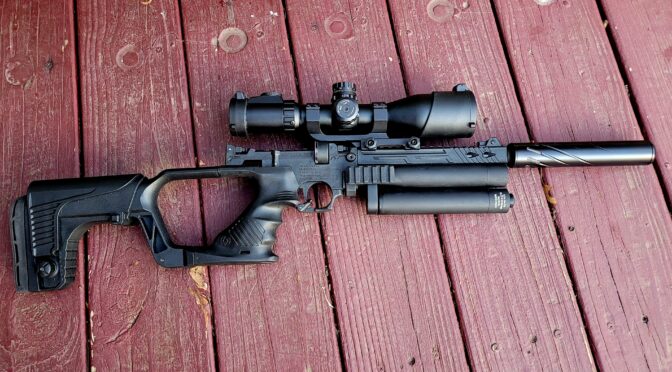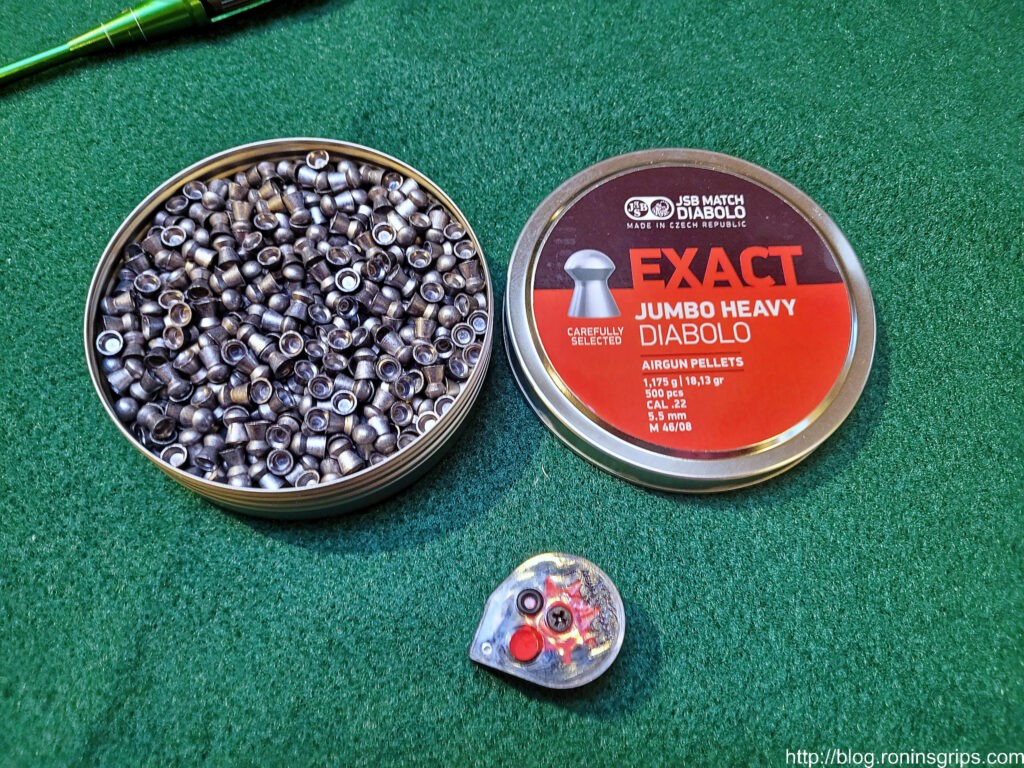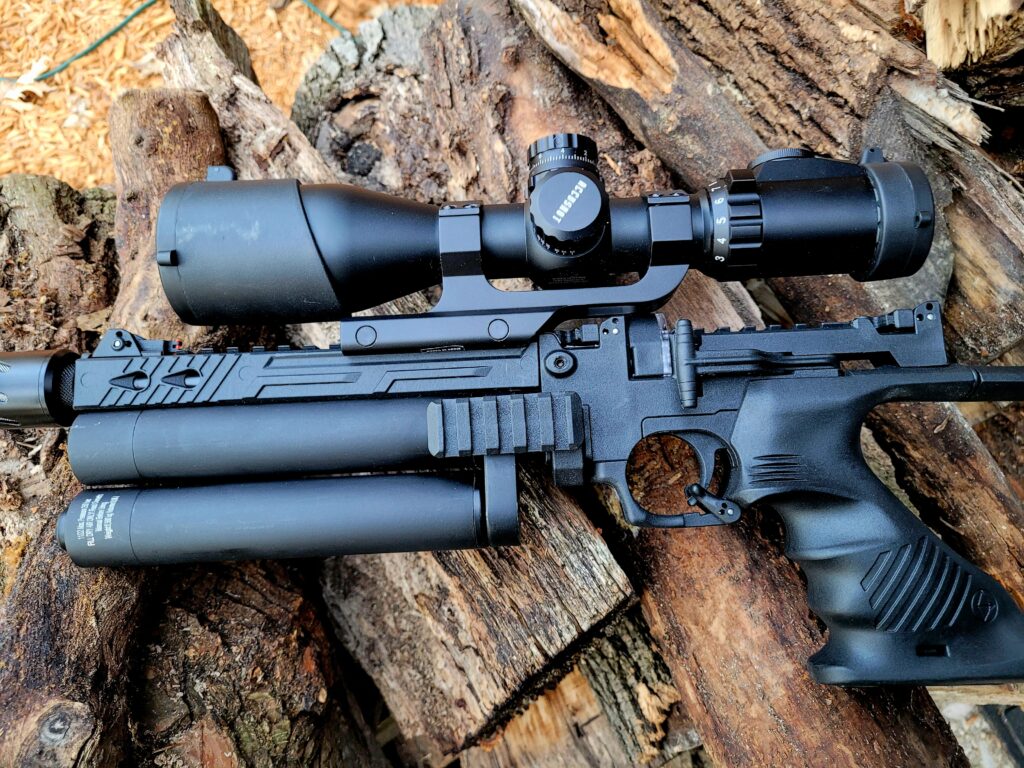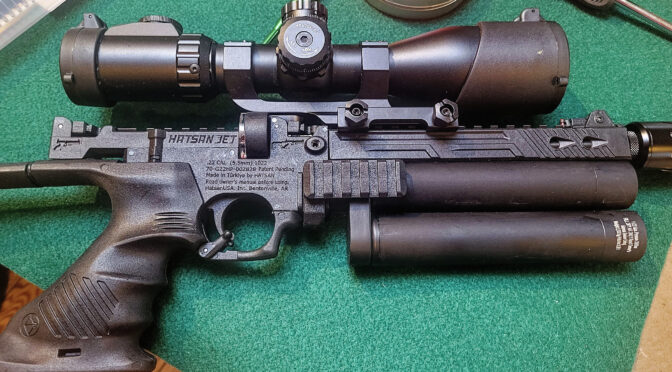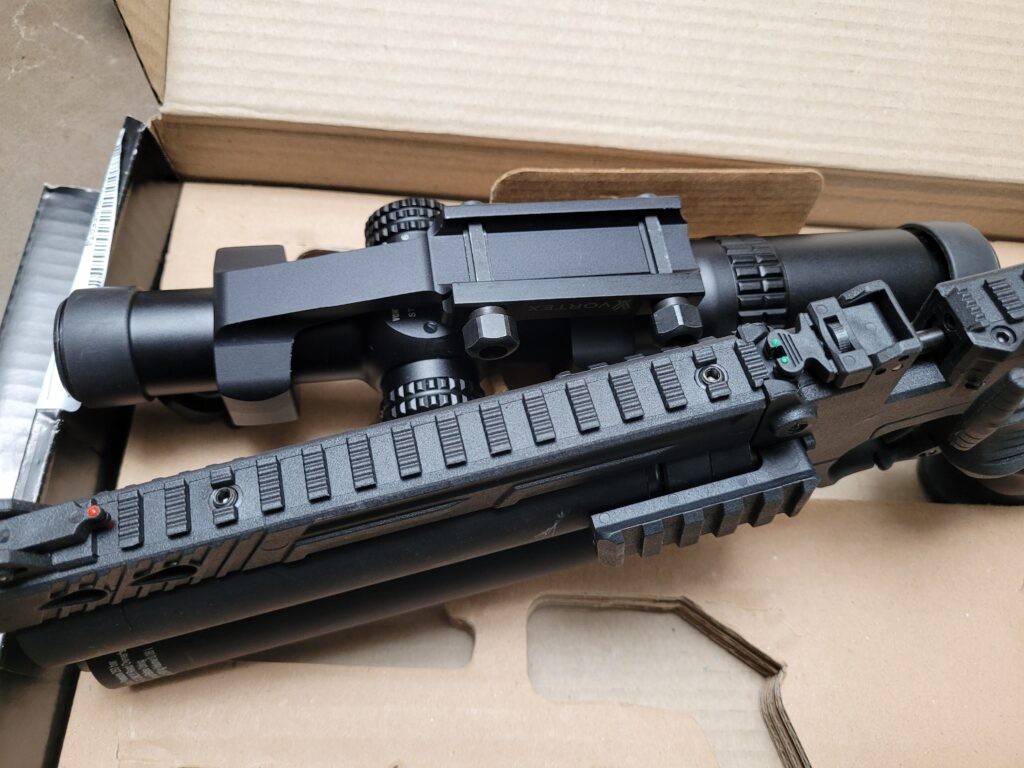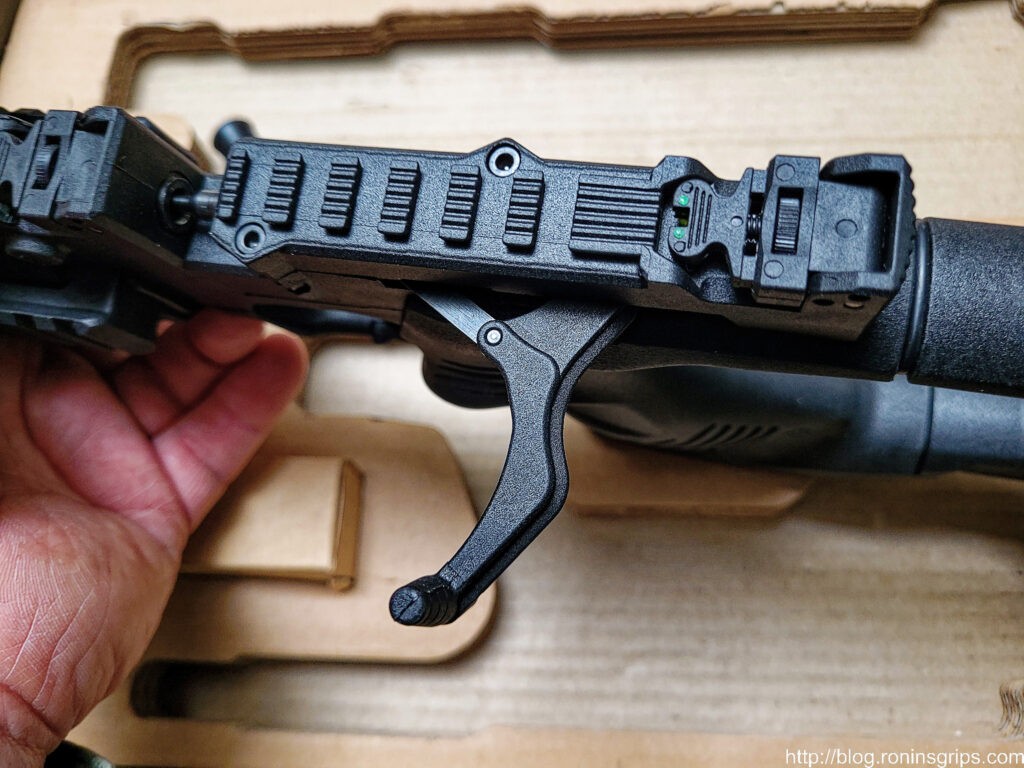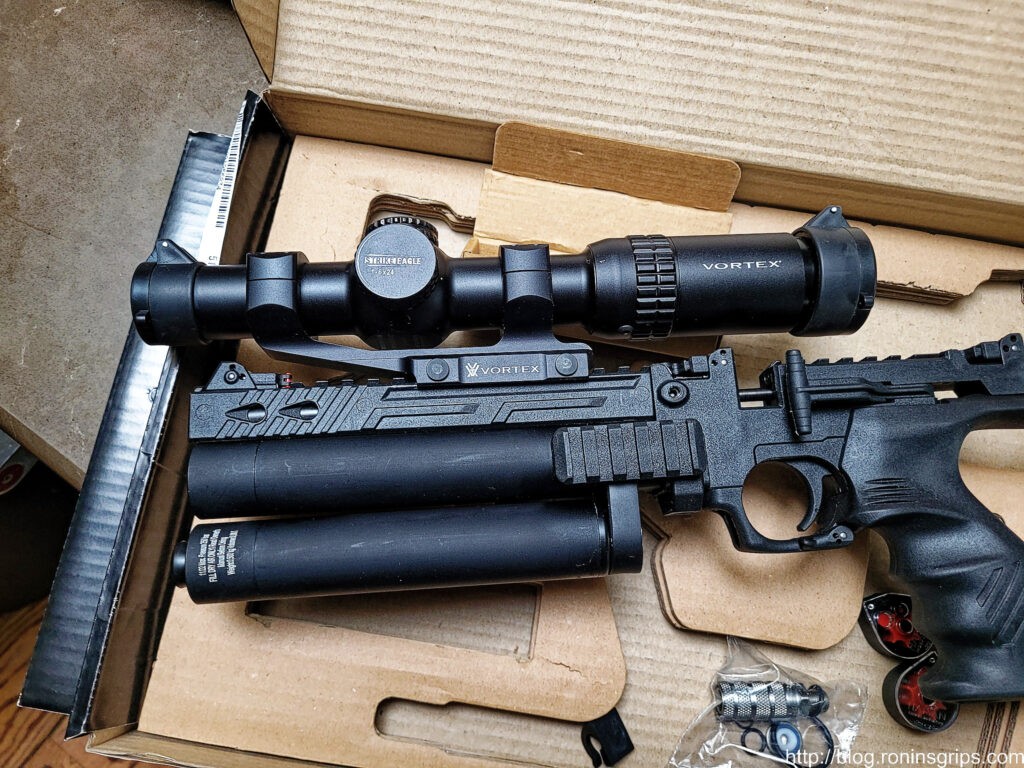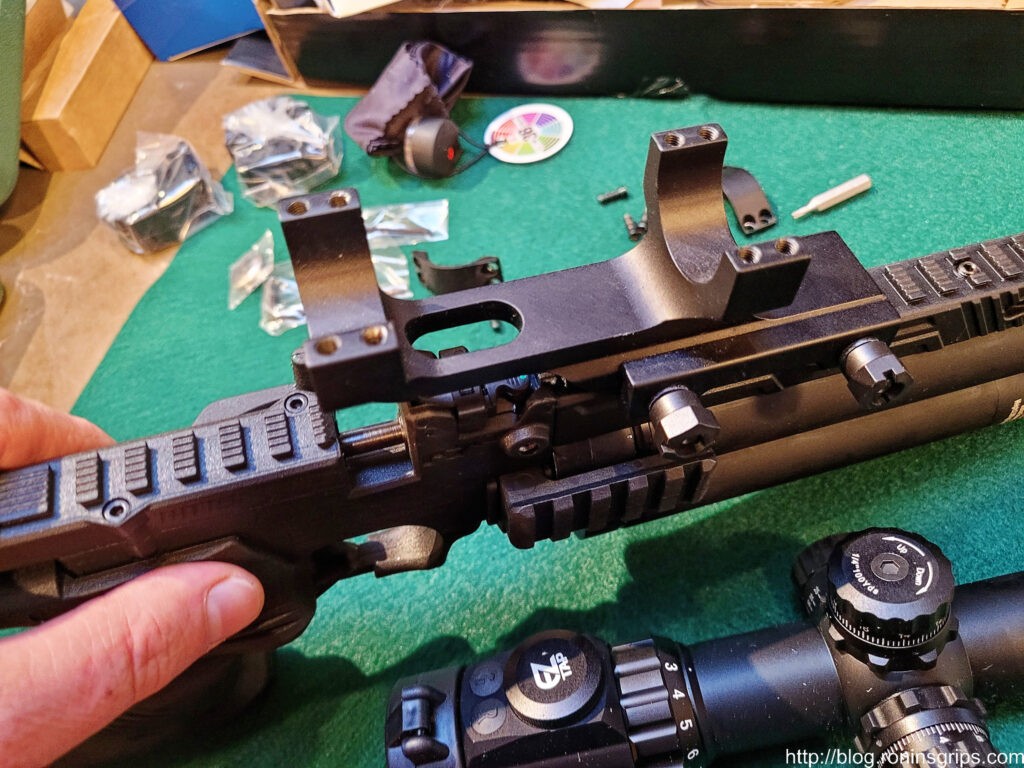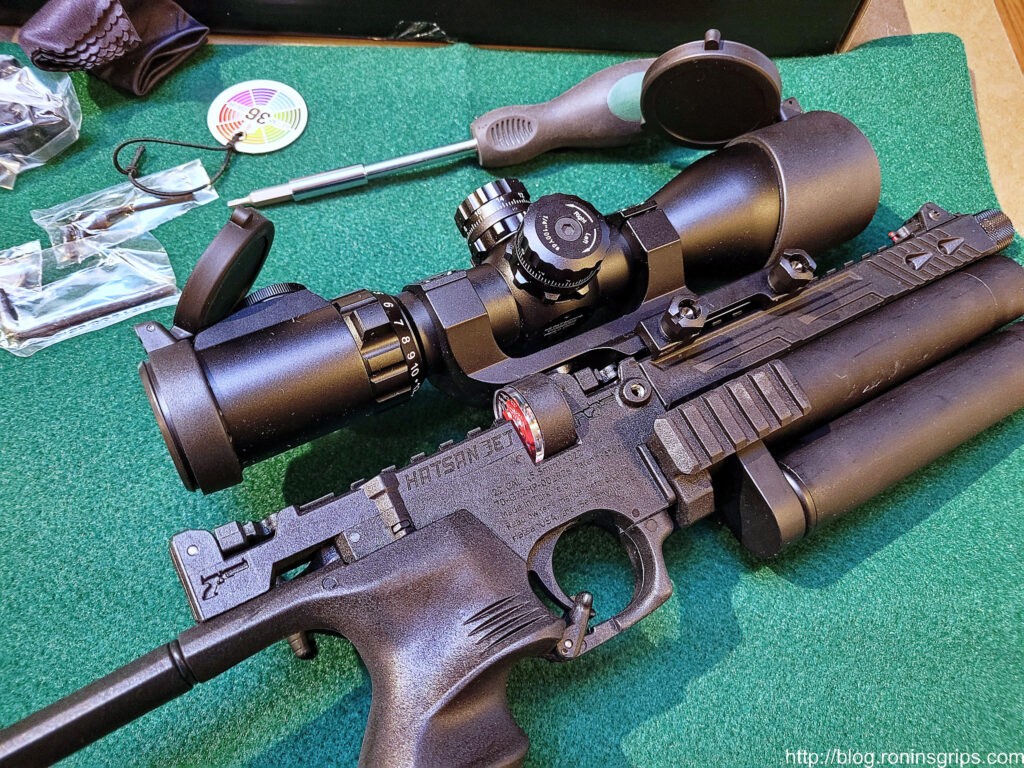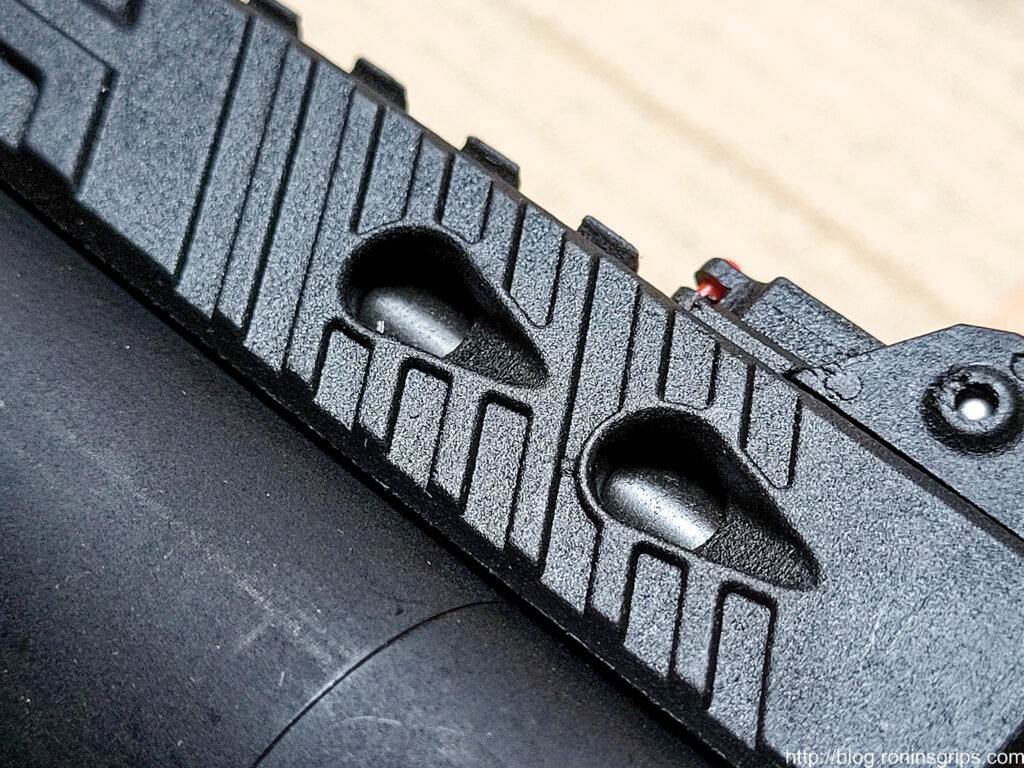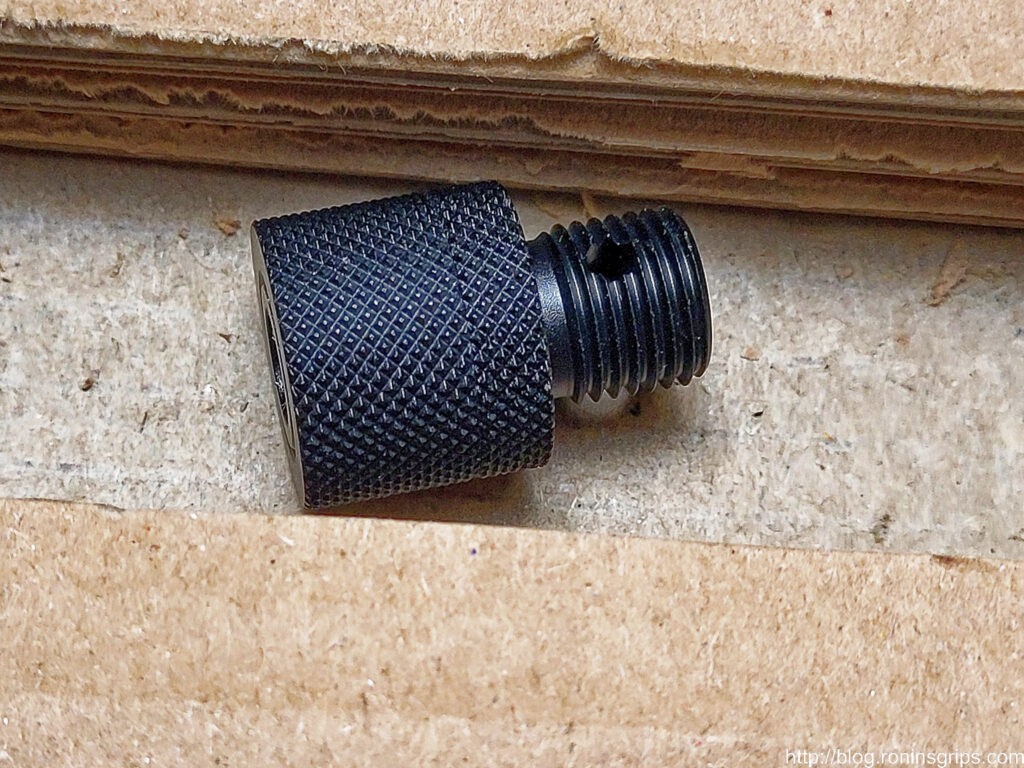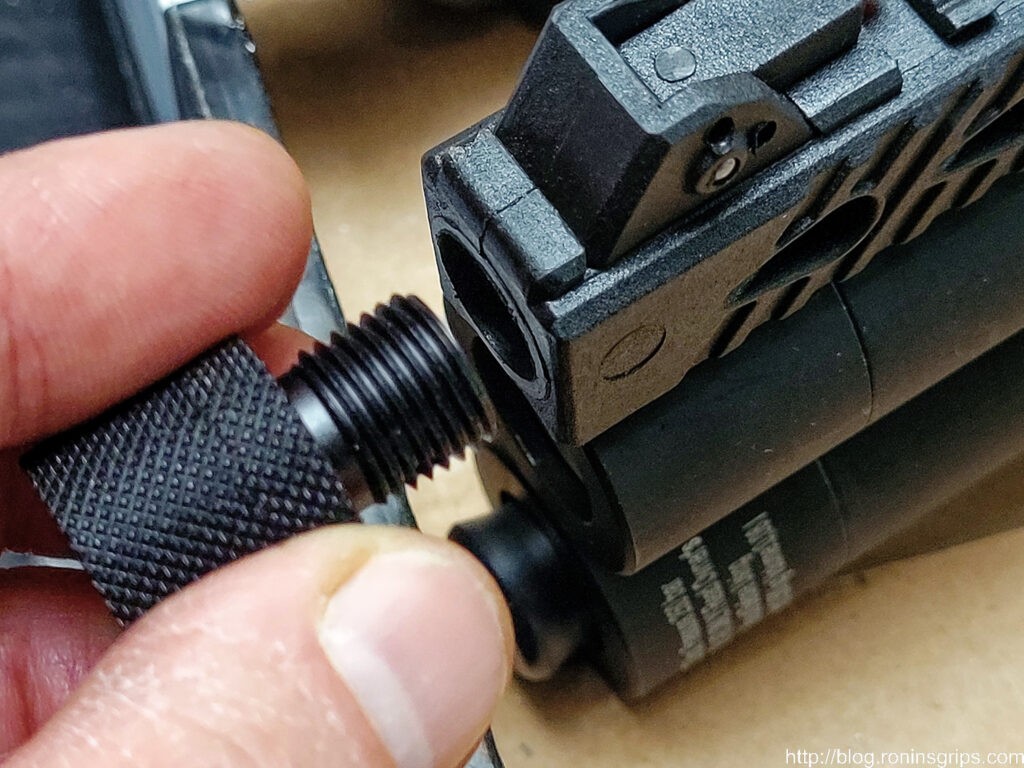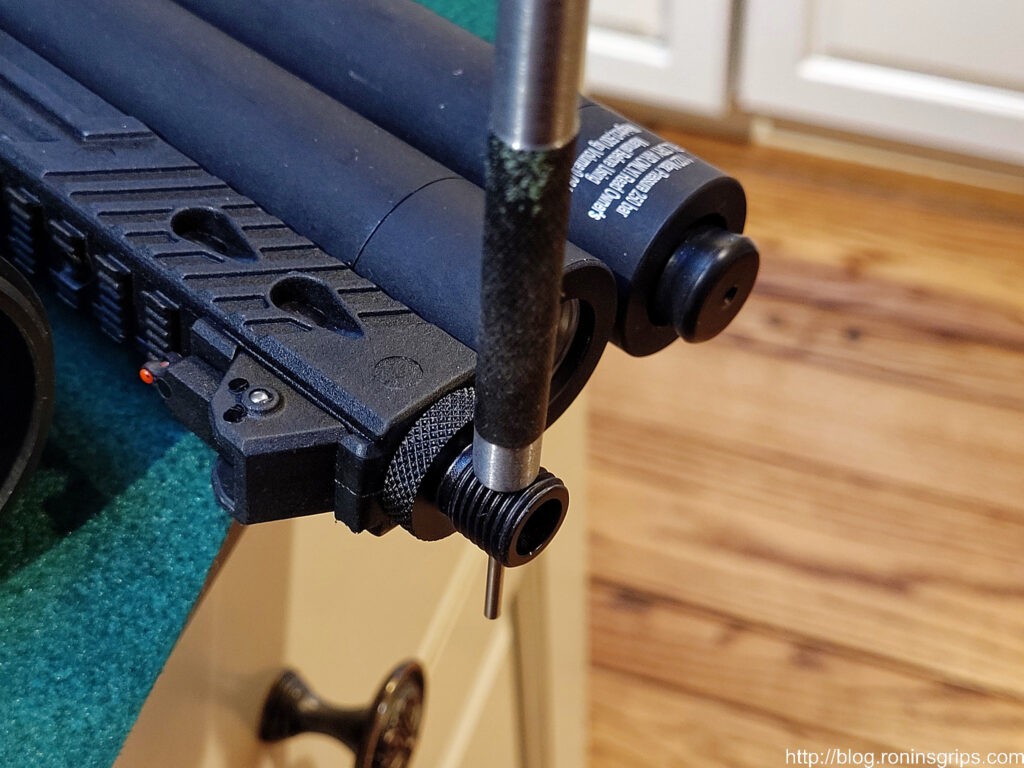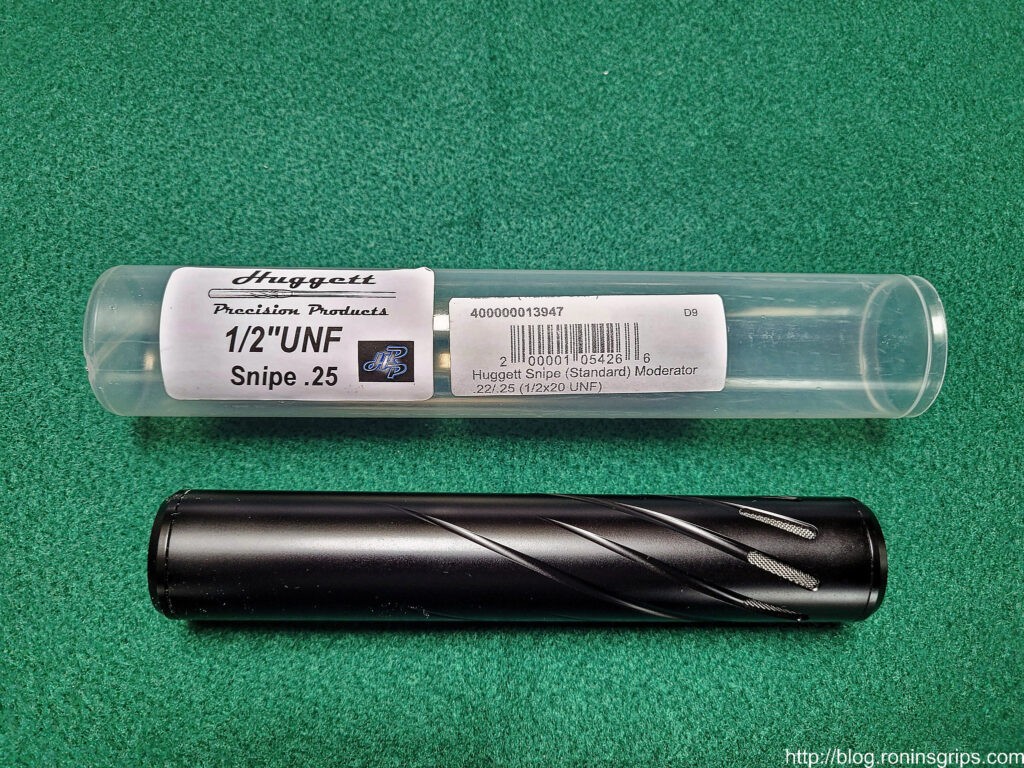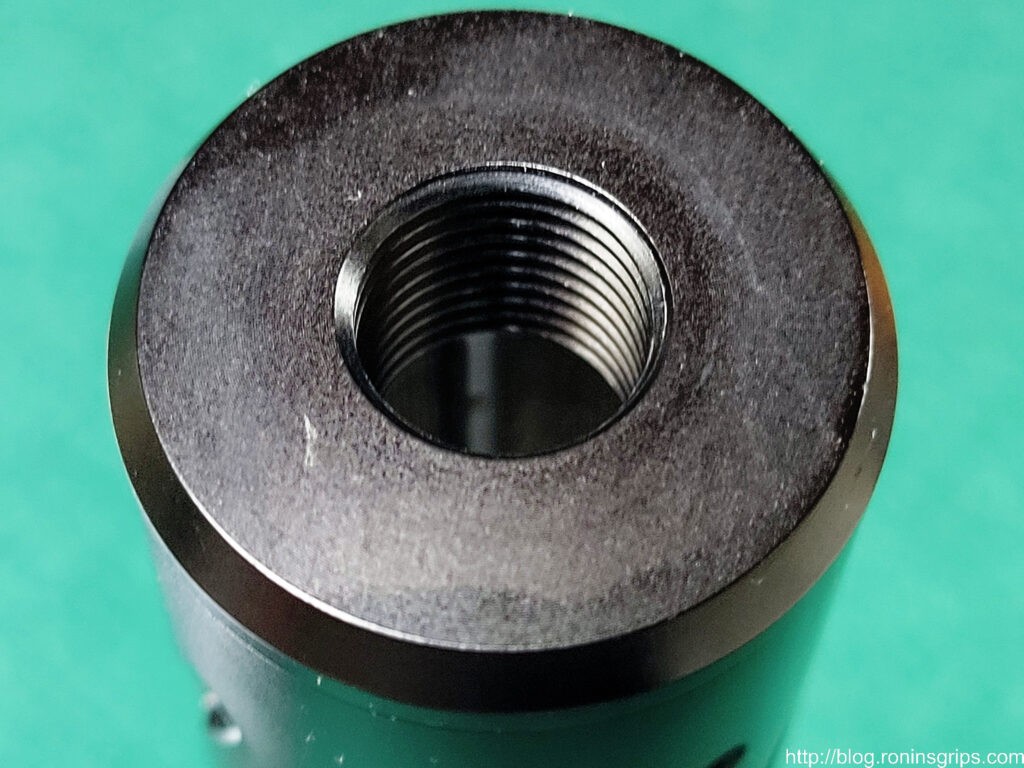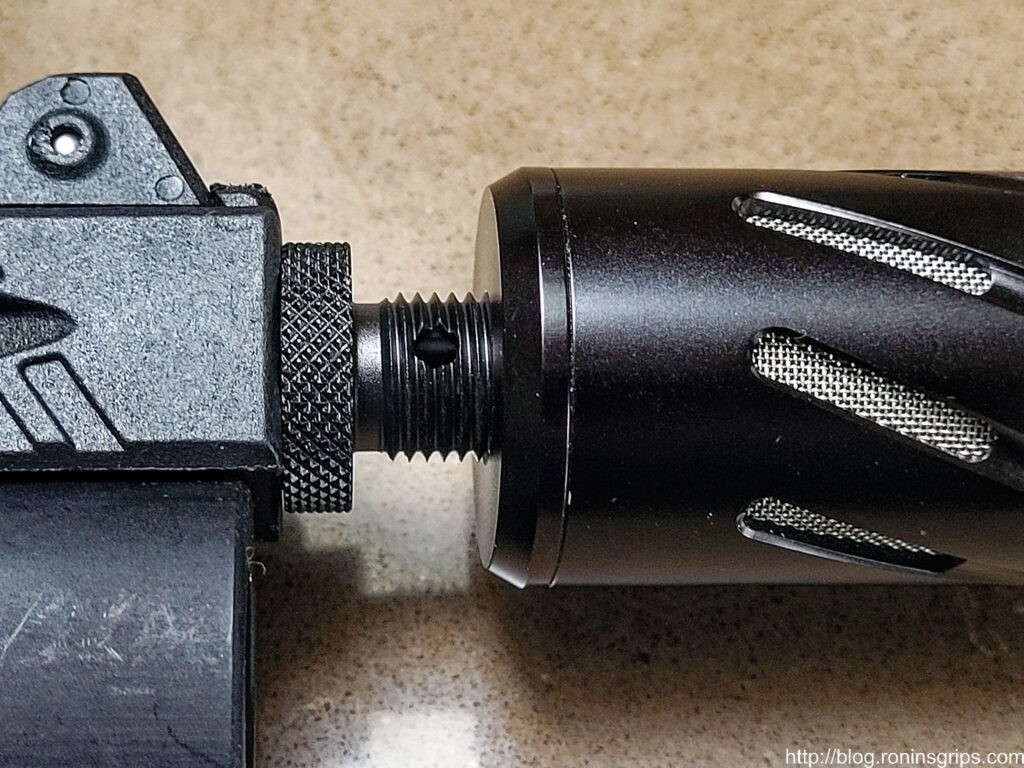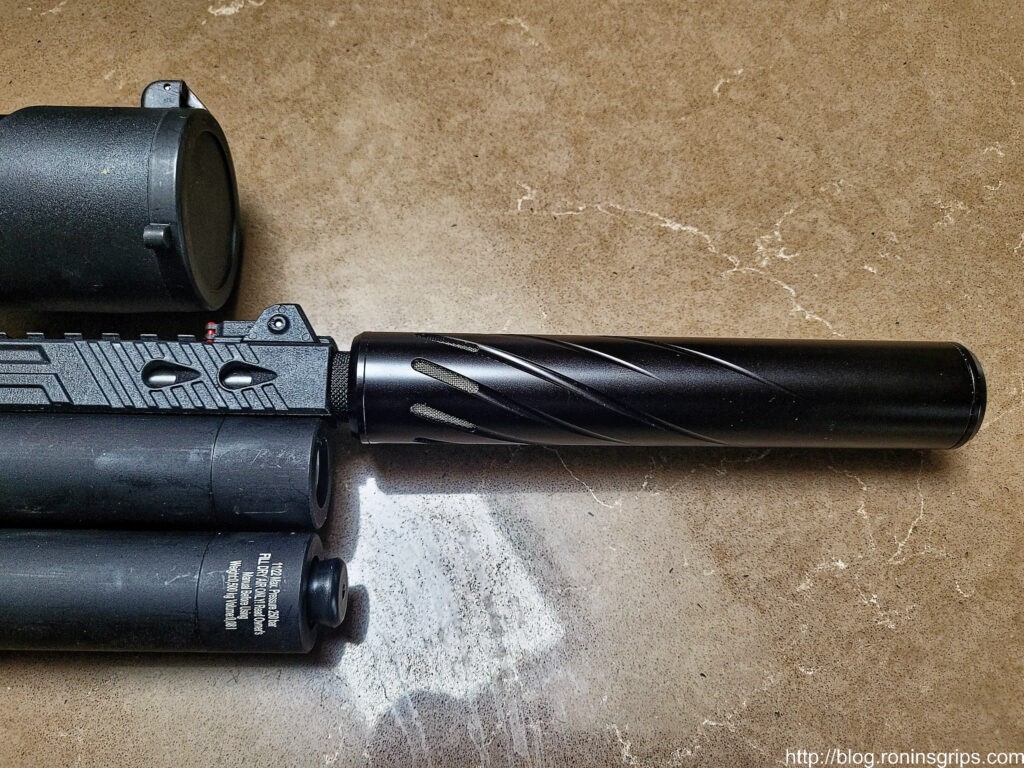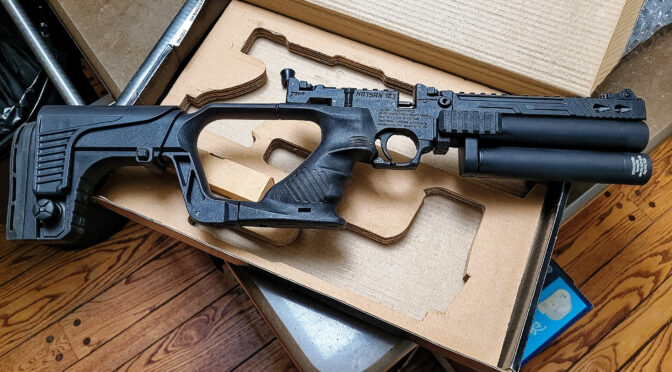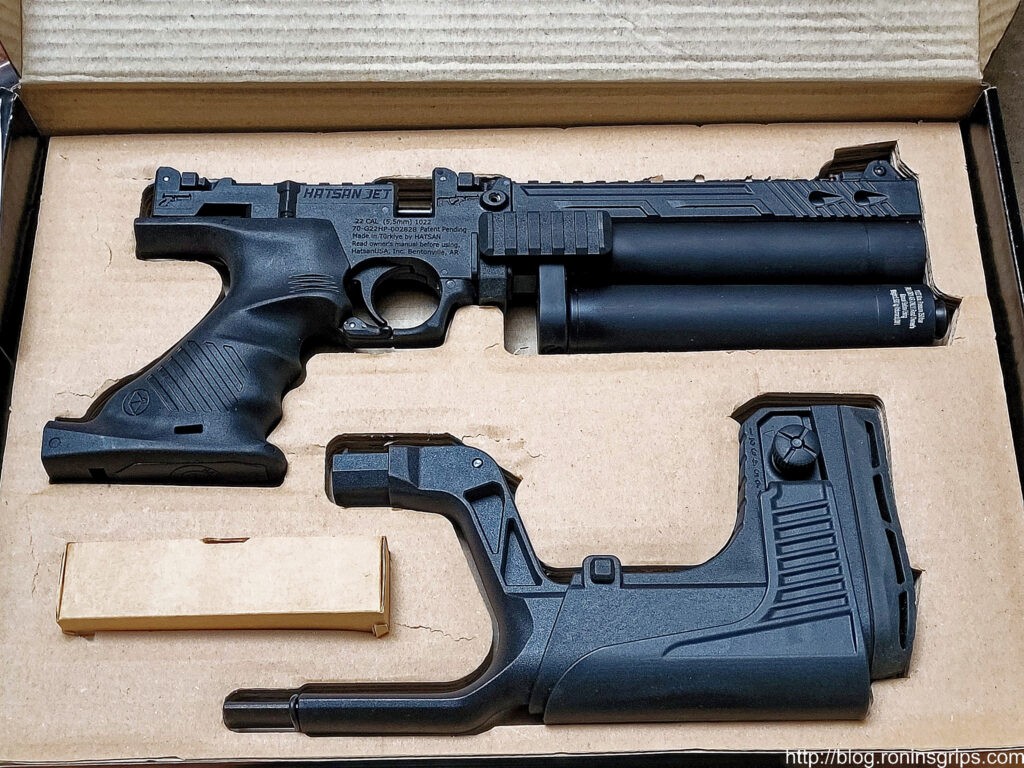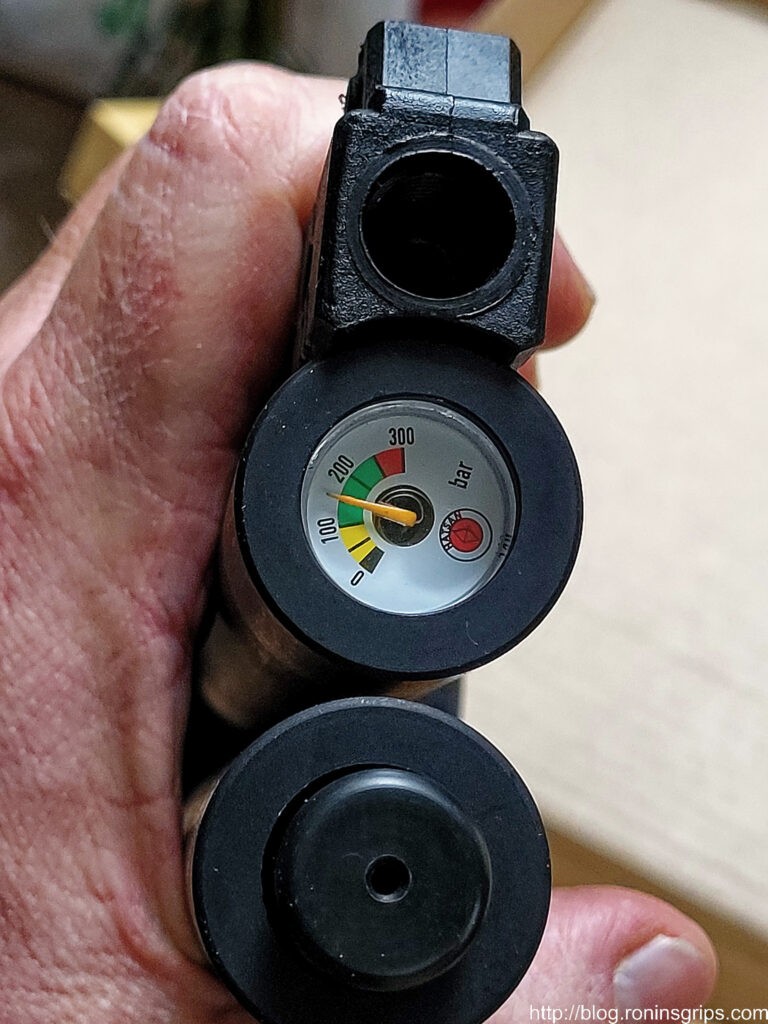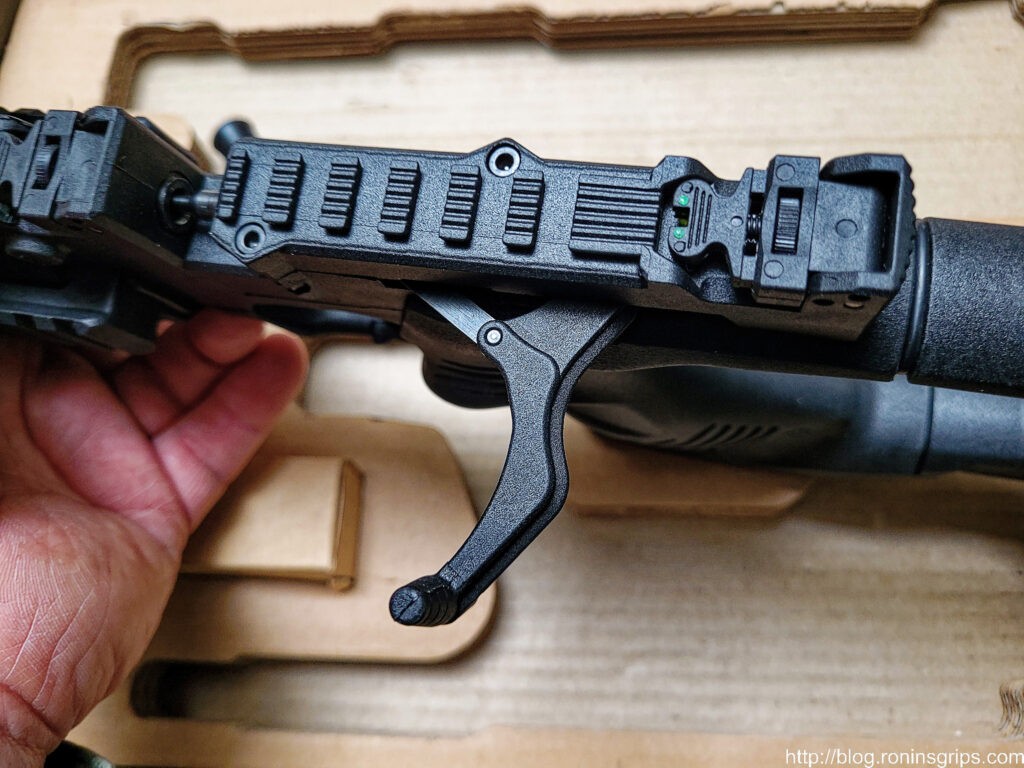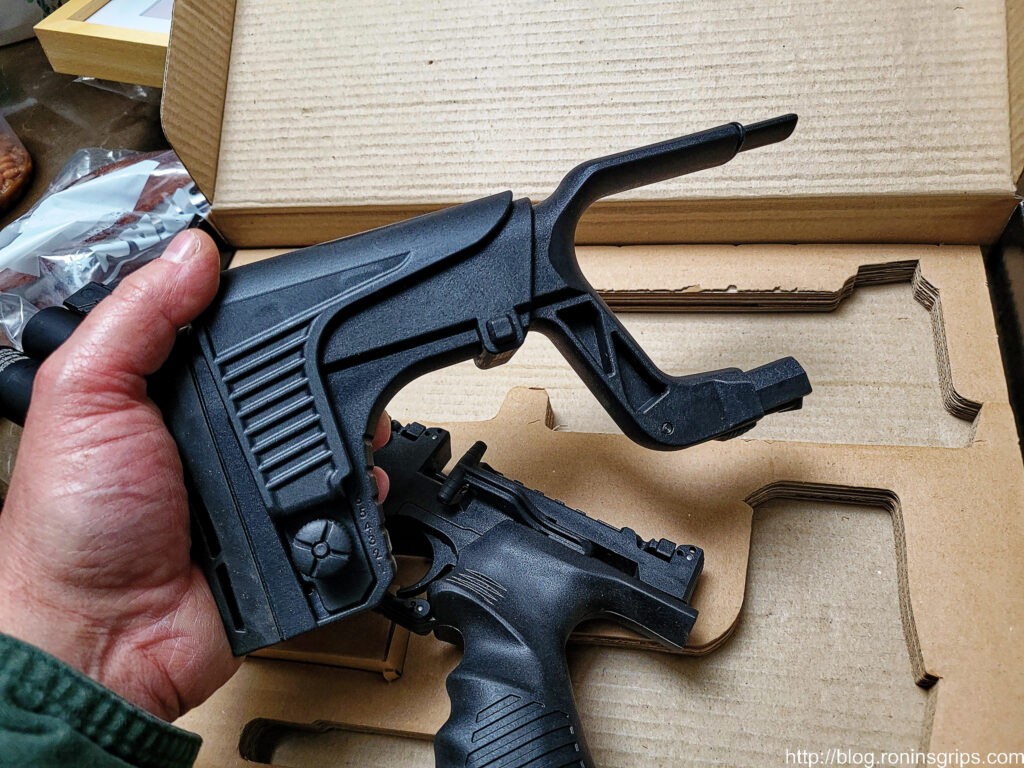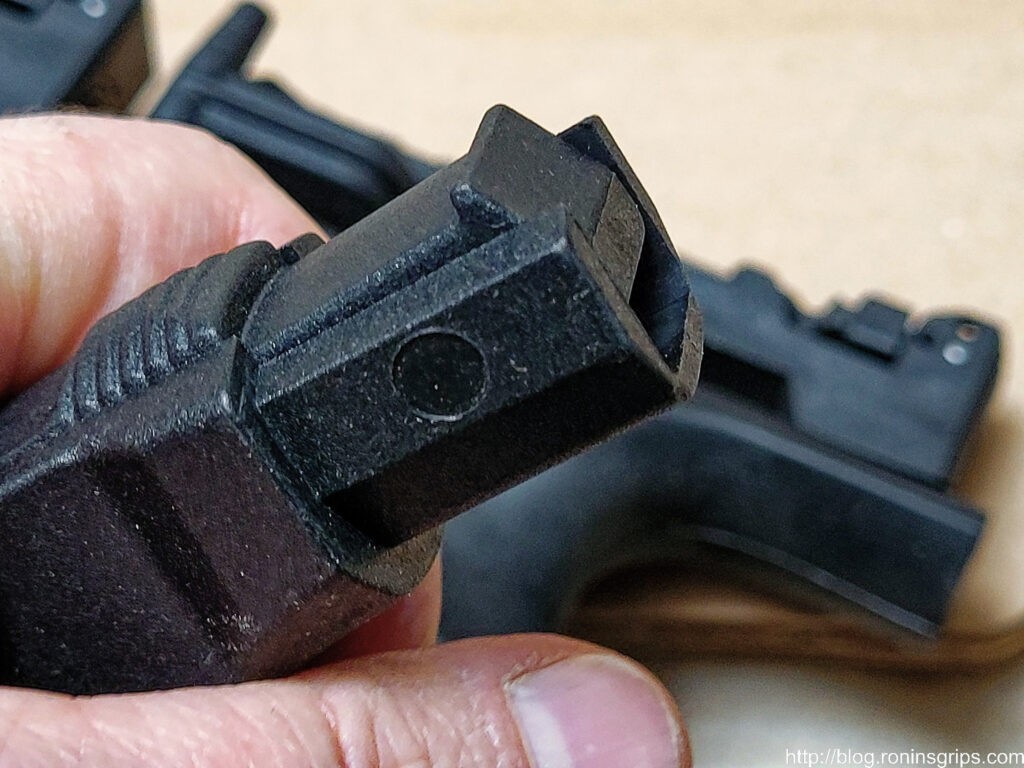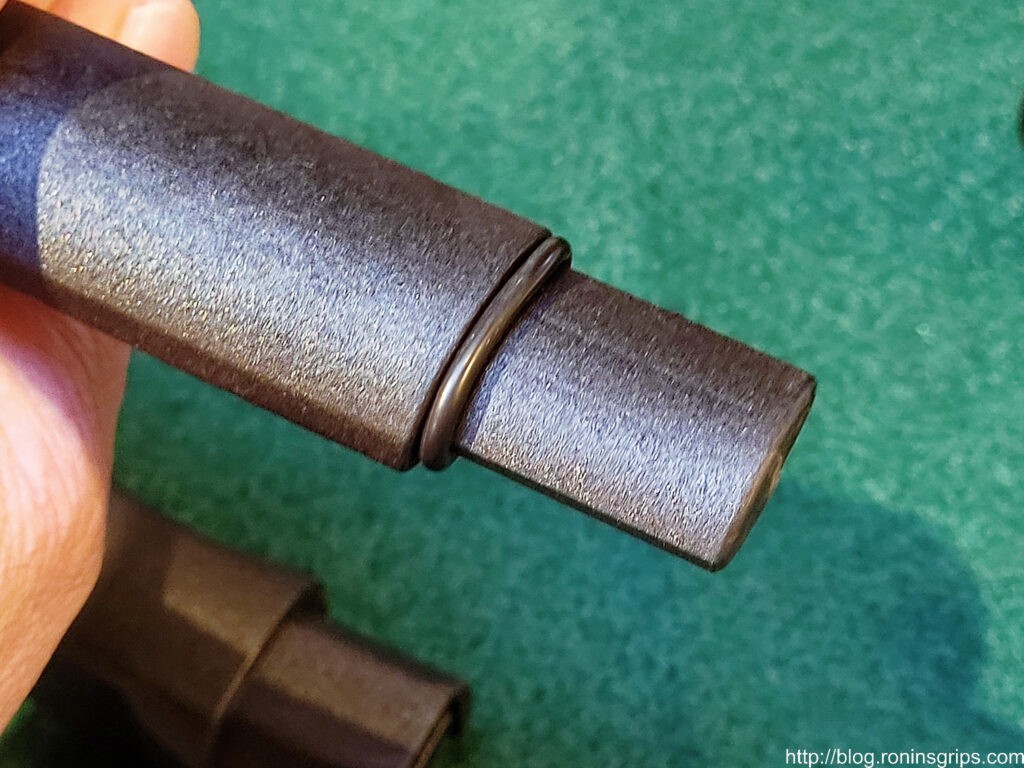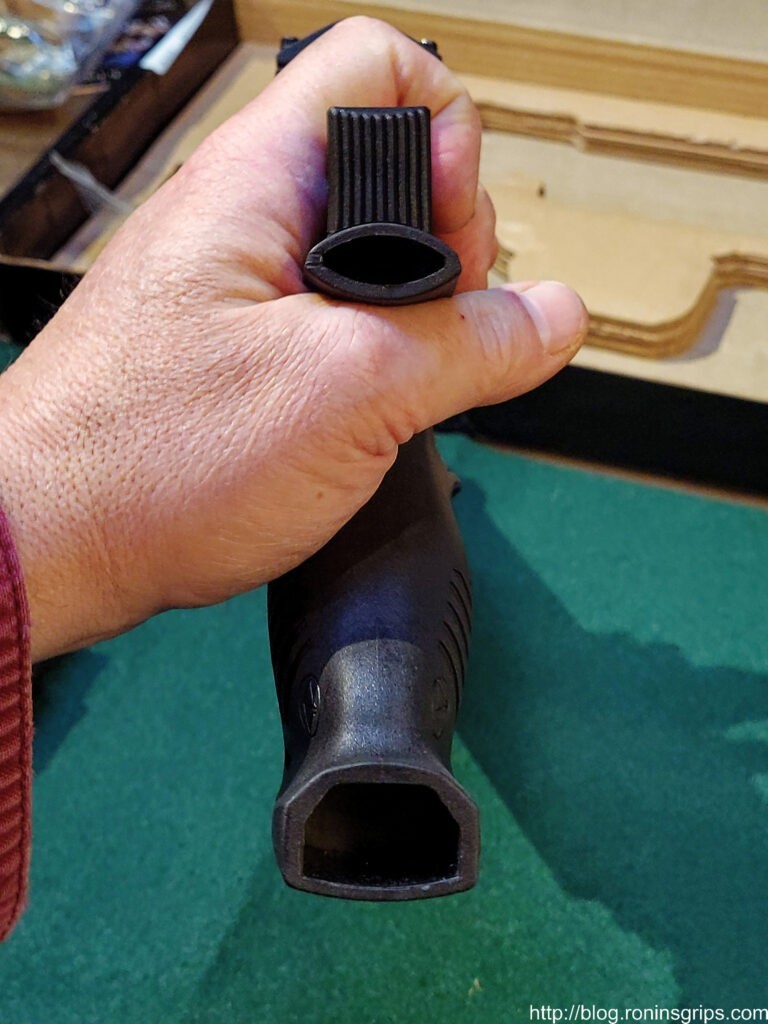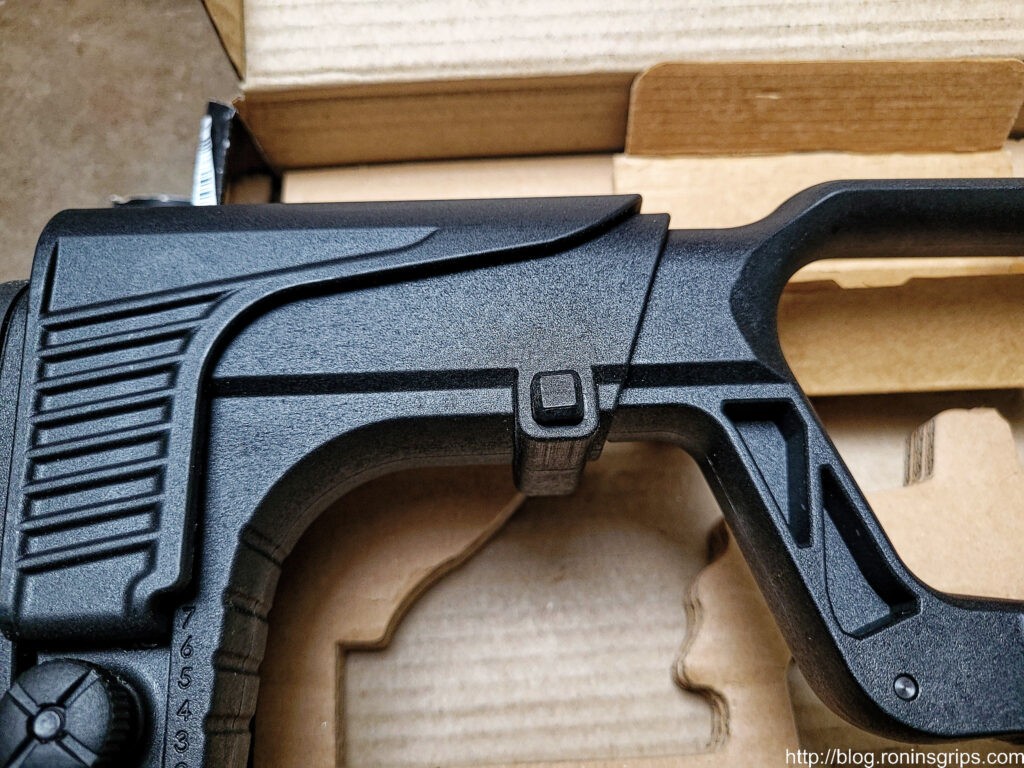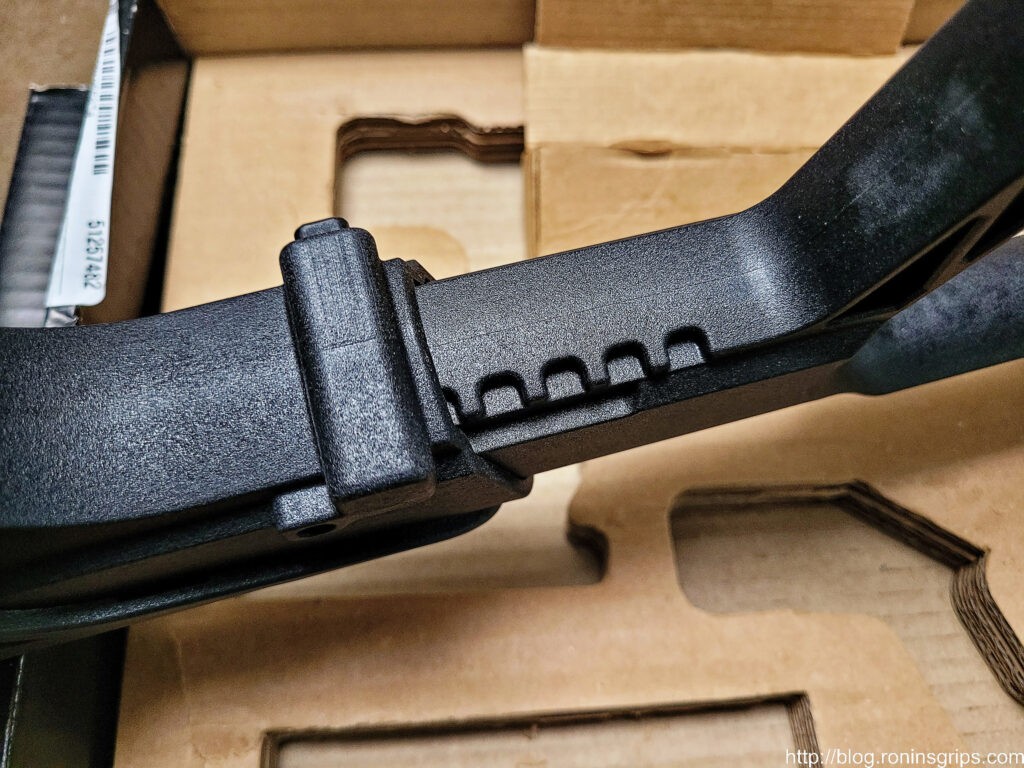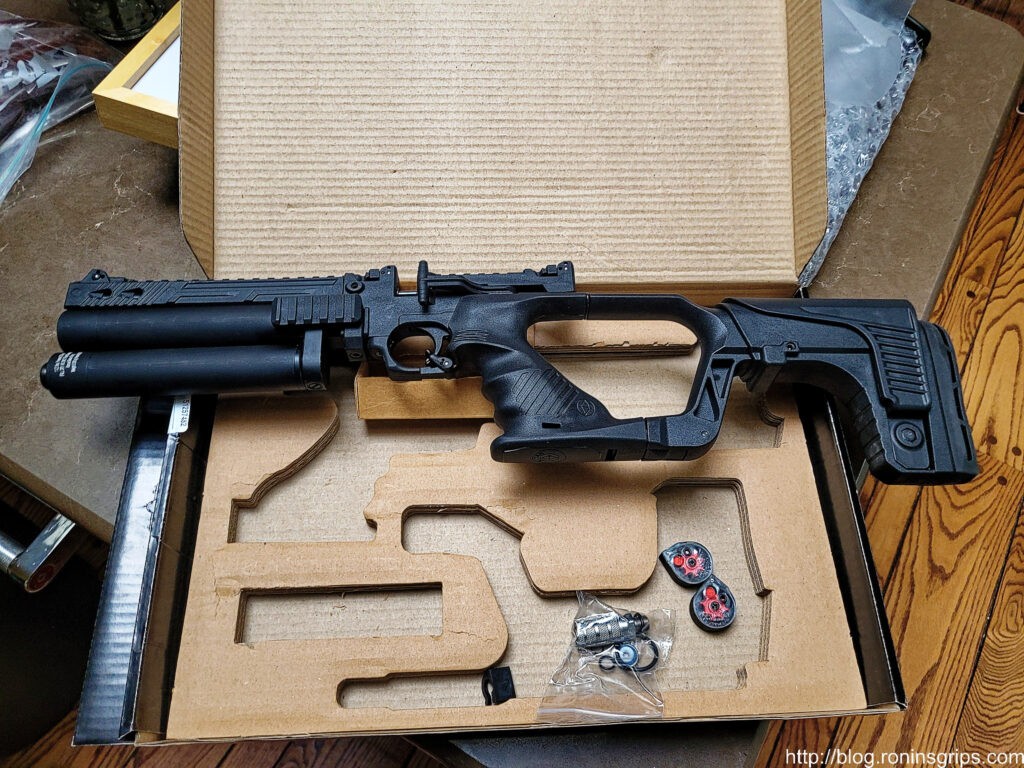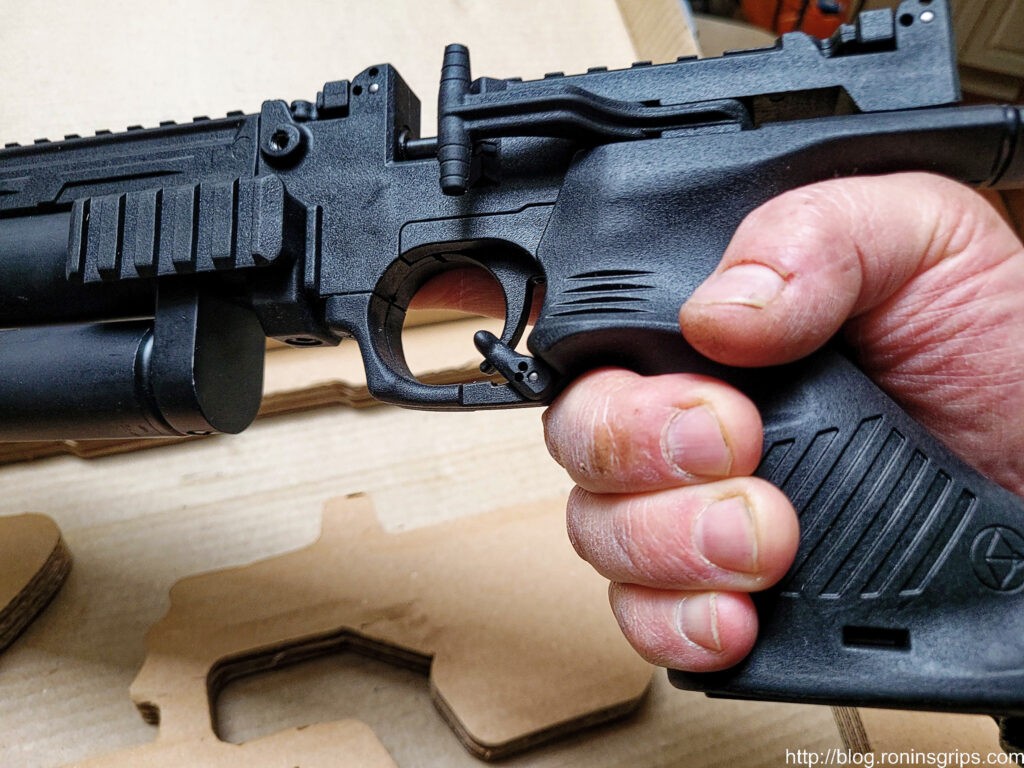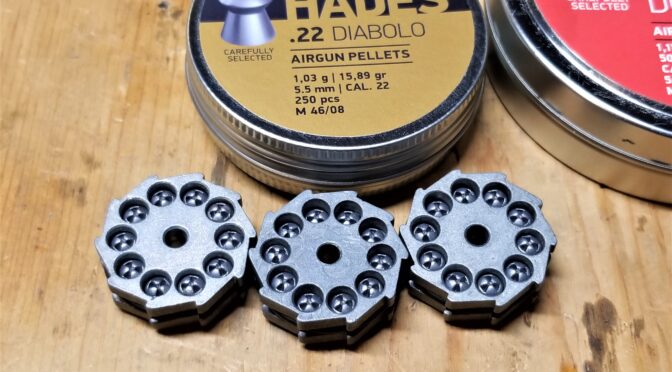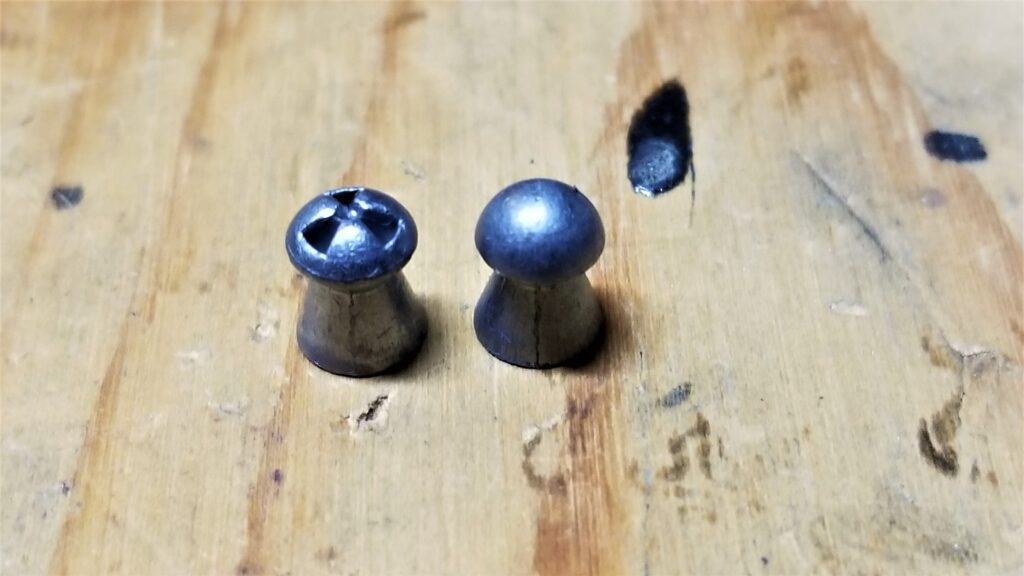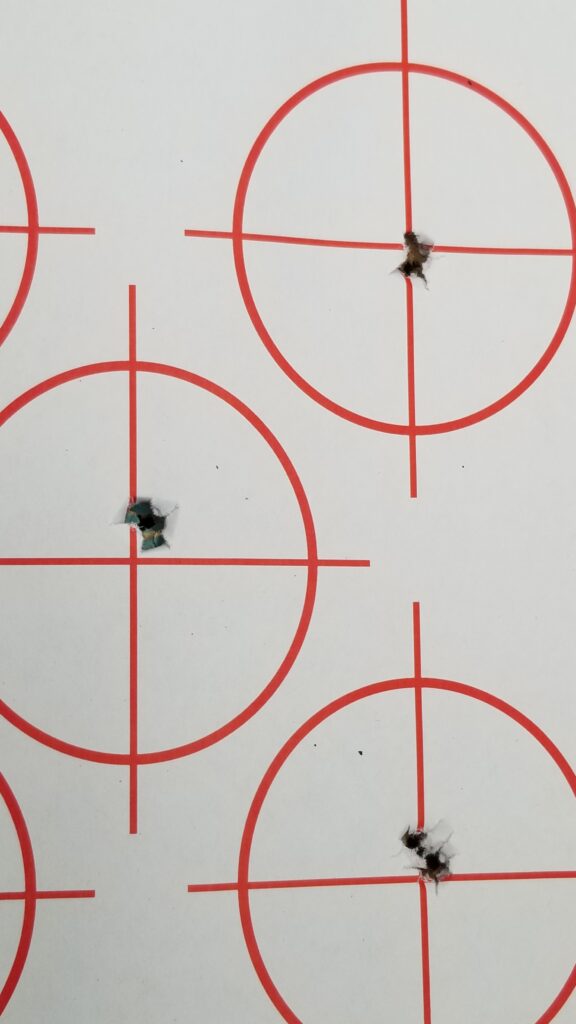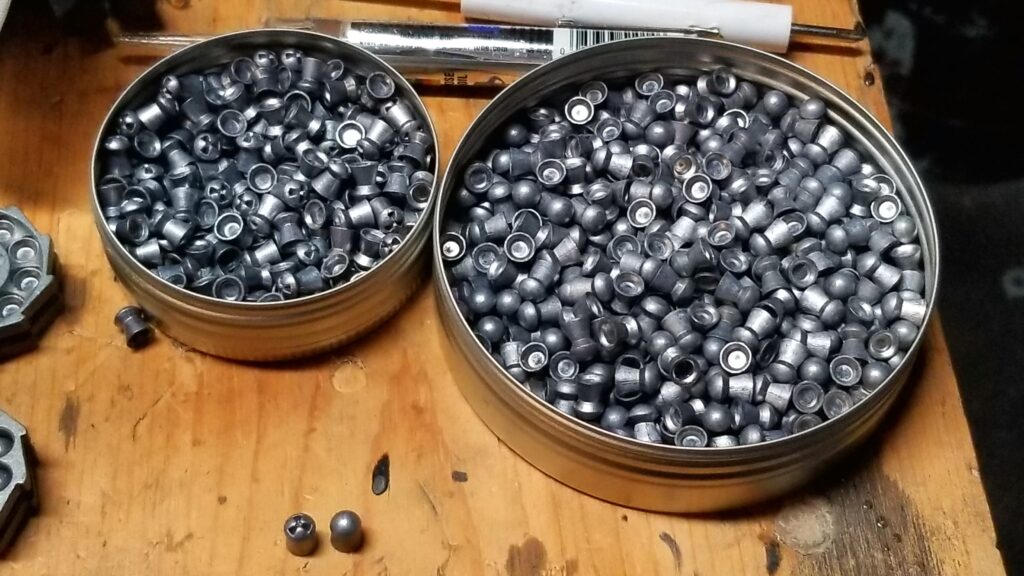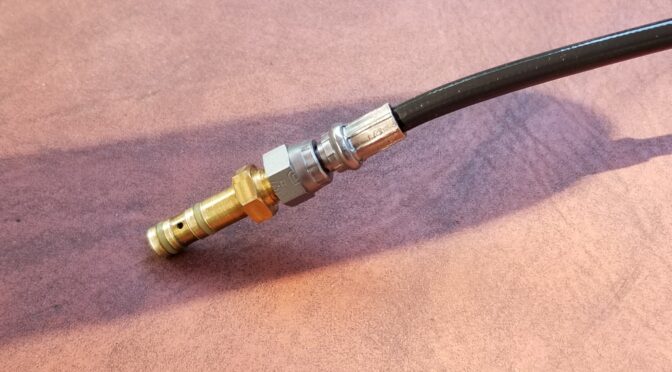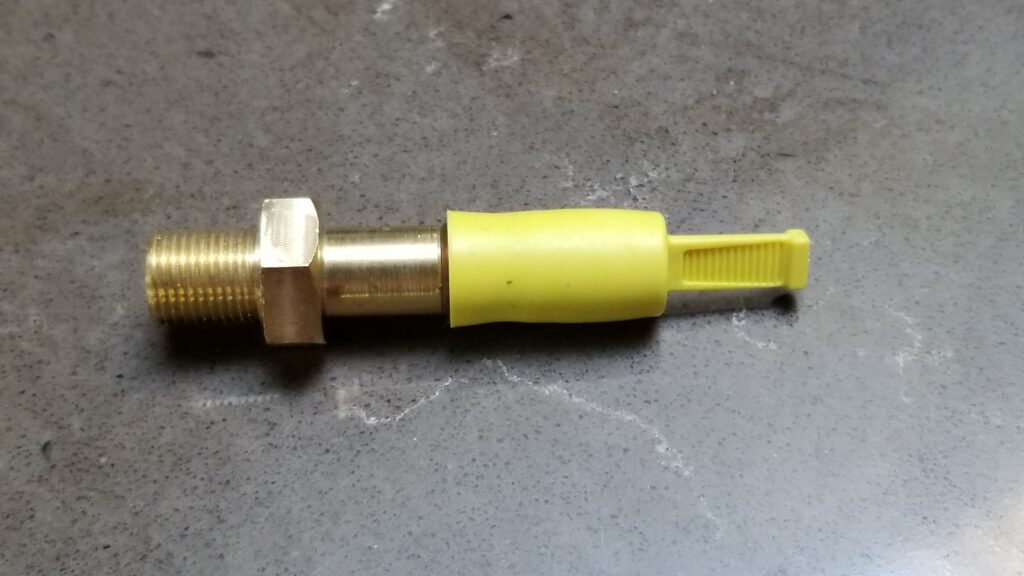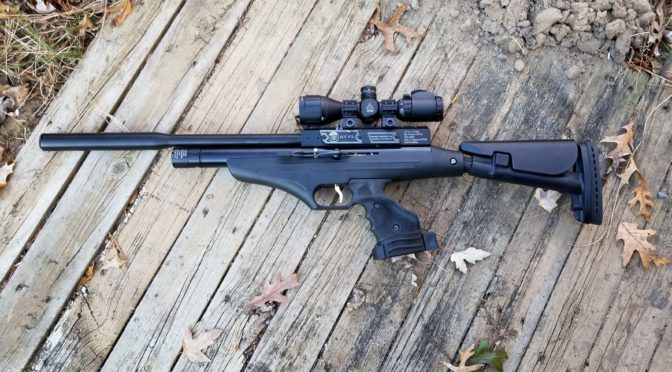I wrote a series of posts about purchasing a .22 Hatsan Jet II right after I bought it in early January 2022. After shooting it for a month I have some feedback to share.
I’d guesstimate I have just over a 100 rounds through it. I’ve changed quite a few 7 round mags – that much I know for sure. The first thing I want to tell you is that the performance and reliability are surprising. It reinforces to me that Hatsan can turn out some great airguns.
The Shroud Is True
I was a little worried about how true the shroud would be relative to the center of the barrel’s bore. In my Gladius, it was not. With the Jet II, it is. The way you can tell is that pellets are landing all over the place because they hit the adapter or somewhere in the moderator and spin out of control. In other words, accuracy is horrible until you remove the moderator and/or the adapter. The DonnyFL 1/2-20 male to male adapter screwed right and then the Hugget Sniper to it and accuracy was great.
Accuracy
Speaking of accuracy – I was very happy. Once I dialed in the scope I had no problem shooting 1/2″ 7 round groups using 18.13 JSB Exact Jumbo Diabolo pellets at 12 yards from a bench. To be clear – just me resting my arm on the bench. I didn’t have a true rifle stand.
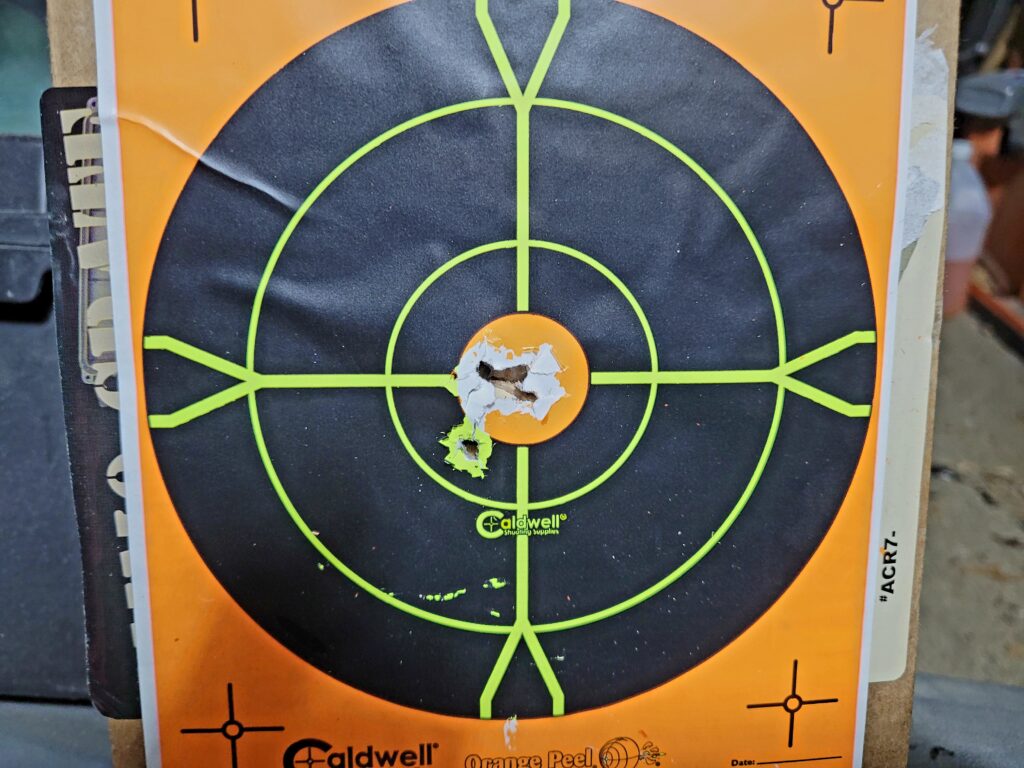
Now, another form of accuracy is to tell you about squirrells. I have cleanly dispatched 8 over the last three weeks. Distances vary from 12-16 yards.
The Charging Handle
In my first review I voiced a concern about the polymer charging/cocking lever. So far, it has worked just fine – no signs of any loosening or bending.
Air Use
I purposefully bought the Jet II due to the larger air reservoir than the Jet I. I could shoot two mags with no noticeable change in trajectory in my 12 yard test range shooting 18.13 JSB Exact pellets.
My usual approach is to shoot a mag and then top of the Jet II from my air tank at the same time I reload the pellets in the magazine. I have a spare magazine ready to go so if I was in a rush for some reason I know I have a little bit of buffer just in case I need it – I’m using the gun for pests and not target shooting.

Snipe Moderator
I’m using the Hugget Snipe moderator and it almost makes the Jet II backyard friendly. It’s far quieter with it of course – I just wish it was quieter yet and will experiment some more with different cans.
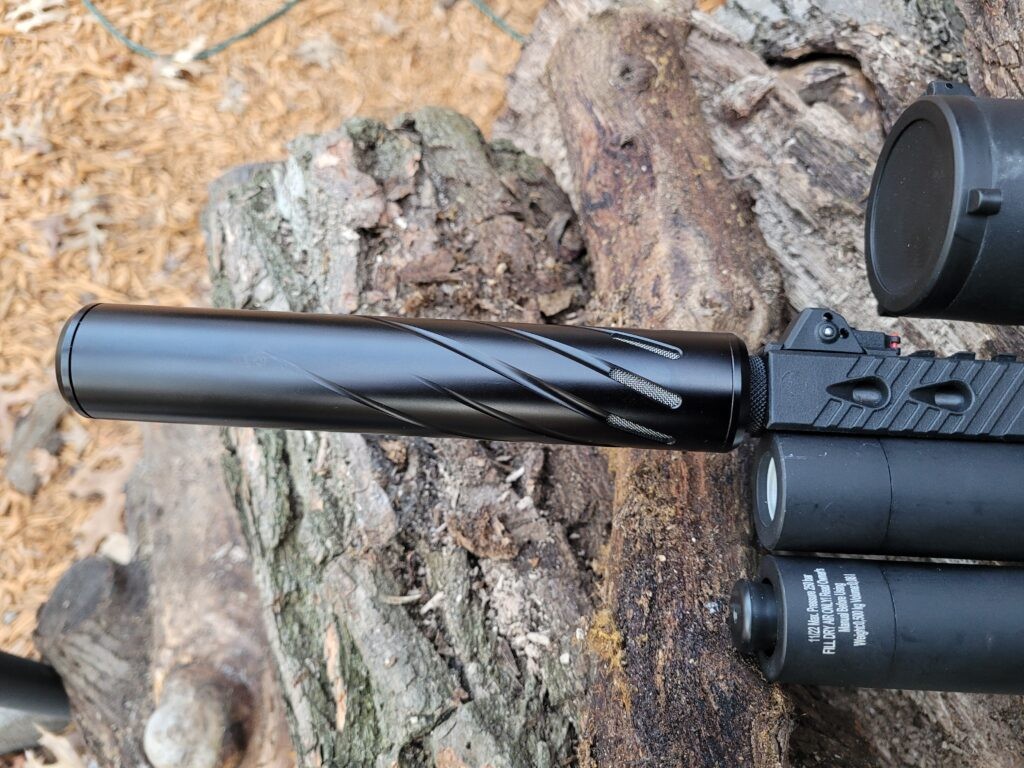

Summary
At this point I am still very happy with the Jet II for it’s intended pest control purposes. It’s definitely effective and amazing for the price when you stop and think about it.
Here’s the listing at Pyramyd Air and I always recommend you use their 10 for $10 test service:
Note, I have to buy all of my parts – nothing here was paid for by sponsors, etc. I do make a small amount if you click on an ad and buy something but that is it. You’re getting my real opinion on stuff.
If you find this post useful, please share the link on Facebook, with your friends, etc. Your support is much appreciated and if you have any feedback, please email me at in**@*********ps.com. Please note that for links to other websites, I may be paid via an affiliate program such as Avantlink, Impact, Amazon and eBay.
